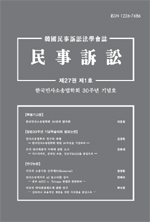Our case law has established a legal interpretation system for subrogation suits over a long period, with its foundation likely based on the theory of third-party standing to sue and the expanded provision on the subjective scope of res judicata, according to Art. 218, Para. 3 of the KCCP(Korean Code of Civil Procedure). It is well-known that lawsuits for collection(Art. 249 Korean Code of Civil Enforcement, KCCE) have also been understood to follow a structure similar to that of subrogation suits. However, starting with the Supreme Court's decision on collection suits dated December 18, 2013 (2013Da202120), the Court seemed to have decided to depart from the existing theory. In its decision dated October 29, 2020 (2016Da35390), it presented a new position on the subjective scope of res judicata, based on arguments that are difficult to explain within the existing framework. However, the persuasiveness of these arguments was very low, and not only did they not align with the position of existing case law, but the interpretation of Art. 249, Paras. 2 to 4 of the KCCE, which served as the basis for the argument, seems to completely disregard the origin and history of these provisions. It is surprising that there has been no change to these provisions of KCCE for over a century, yet it is also surprising that provisions once ignored are suddenly being revived and used as a decisive tool to undermine the legal system we have maintained for so long. Even I am uncertain whether it is appropriate to understand collection lawsuits through the theory of third-party standing to sue or the theory of inherent competence. However, shouldn’t the law be predictable for those who use it? It may also be necessary to establish a system and order within the legal framework. For example, I believe we should impose commonalities and reasonable differences between bankruptcy administrators exercising rights on behalf of others, seizing and collection rights, and general creditors who can exercise subrogation rights, so that those who use the law can have predictability. I hope that the Supreme Court will restore the consistency of the theory through a prompt decision.
Ⅰ. 들어가는 말
Ⅱ. 추심소송과 대위소송에서의 채무
Ⅲ. 추심소송과 대위소송에서의 다른 채권자에 대한 기판력 확장 여부
Ⅳ. 대위소송과 채무자의 이행소송 그리고 추심소송 간의 공존 가능성
Ⅴ. 결론
(0)
(0)
